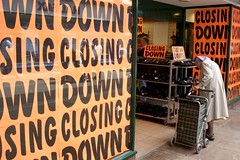We are now deep into the last quarter for 2012. Marketers are pre-occupied by two challenges – planning for 2013 and preparing to launch Q4 campaigns designed to close out the year on a sales high.
Innovation in the customer buying journey has, however, changed the game. We are all retailers now and the ground has already shifted from beneath our feet. Google Retail’s recent report on consumer shopping confirms what we have known for some time:
- The connected consumer sees no distinction between online and offline shopping
- The connected consumer discovers, debates and decides on purchase ahead of the marketing funnel
- Trust drives conversions
Marketers have failed to keep pace with consumer led innovation
While there has been some investment in digital technologies, and campaign experimentation over the last nine months, there has been precious little innovation where it counts – in marketing practice.
Six principles to transform your marketing efforts
Our recent big idea report on recasting the marketing funnel for consumer engagement identified six principles that must be addressed:
- Fragmentation creates silos not synergies
- The marketing funnel assumes a passive customer
- The next-gen customer experience is owned from the outside-in
- Next-gen customers purchase in their own time frame
- Purchase decisions occur before consumers reach your marketing funnel
- Trust is the currency of digital marketing
Marketers must prepare for the most social holiday retail season now
The 2012 holiday season is primed to be the most social ever. And in terms of “social”, read “mobile”. The Deloitte Dawn of Mobile Influence report on mobile retail reveals that mobile already influences significant in-store purchases and this is predicted to accelerate through 2016. This shift is a global phenomenon as our upcoming report 5 Lessons from Digital Asia Pacific’s Digital Trajectory shows, with mobile innovation efforts garnering 100 million+ audiences across the region.
To outcompete in your markets, retailers must move quickly to identify and fill gaps in the customer experience journey. To counteract this mobile disruption, retailers should:
- Re-cast the marketing funnel in terms of the buyers journey
- Look to software-as-a-service providers to fill the technology gap quickly and effectively
- Consider whether your digital (mobile and social) marketing really does focus on customer need across the buying cycle (answer the WIIFM question – does it get me made, laid or paid) and recalibrate accordingly
Your POV
Are your retail efforts up-to-speed? Are you ready for the social holiday season? Add your comments or send us an email.
Please let us know if you need help with your digital strategy efforts. Here’s how we can assist:
- Assessing social business/digital marketing readiness
- Considering new digital strategy
- Developing your social business/digital marketing strategy
- Designing a data to decisions strategy
- Create a new vision of the future of work
- Deliver a new customer experience and engagement strategy
- Crafting a new matrix commerce strategy

